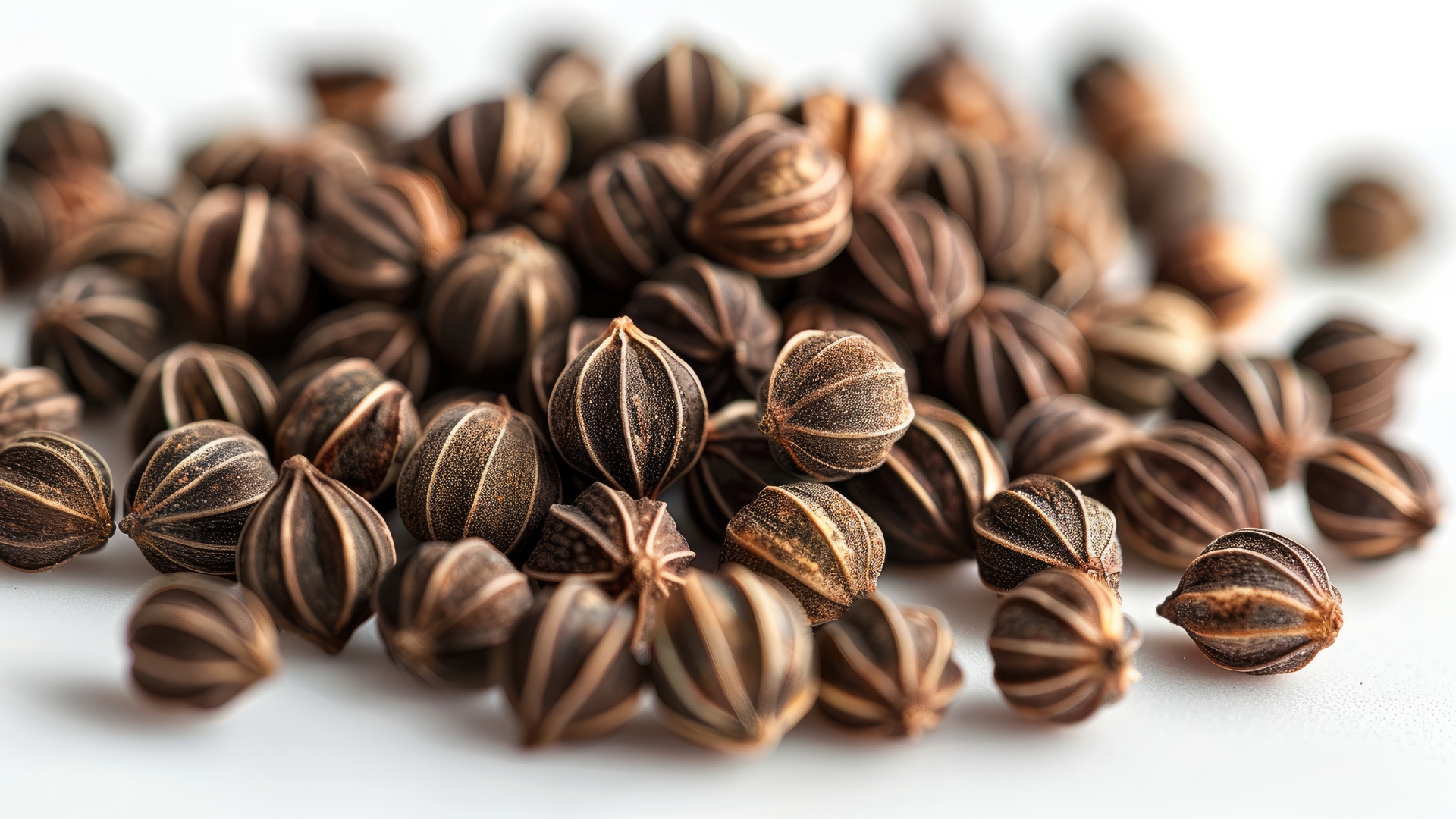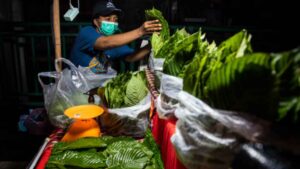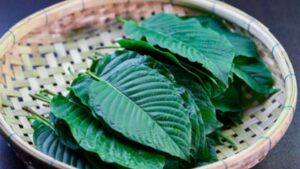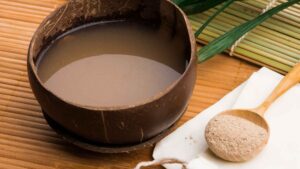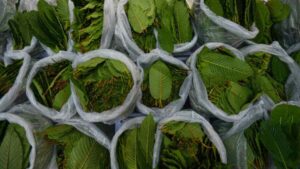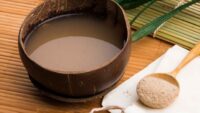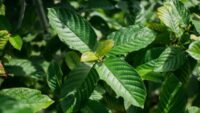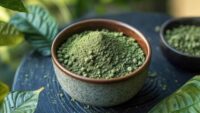Examining the entire spectrum of Kratom requires knowledge about its beginning. Users will seek answers regarding the kratom plant, together with seeds and cultivation methods.
The seed of the kratom tree opens doors for two possibilities, yet provides complementary value to our understanding of this remarkable plant species.
In this blog, you’ll learn step-by-step guidance about kratom plant seeds, including seed acquisition methods alongside necessary germination information, along with relevant legal perspectives.
Background of Kratom
The Dutch botanist Pieter Willem Korthals officially described kratom scientifically during the 19th century. Scientists identify kratom as Mitragyna speciosa. Kratom mainly grows in regions of South Asia, including Malaysia, Thailand, along Indonesia.
The fully grown Kratom reaches 25 centimeters in height, with leaves arranged in an ovate-acuminate shape. Each leaf in this tree shows pinnate venation patterns available in white, green, and red color variations.
The coffee-family native kratom shares stimulant properties with other coffee-type plants but lacks both theophylline and caffeine substances.
Research has emphasized Kratom due to its opioid-like effects over the previous twenty years and its stimulant effects, which are connected to the indole alkaloids in its leaf structure.
What Are Kratom Plant Seeds?
Kratom plant seeds originate from the tropical evergreen tree species Mitragyna speciosa, which is native to Southeast Asian soils.
New kratom plant propagation depends on these seeds, yet they become ineffective very fast and need specific plant growing environments for successful sprouting. Due to fast seed viability loss, kratom seeds present significant difficulties to new growers of this plant.
Key Characteristics of Kratom Seeds
- Short Viability Window: Fresh seeds must be planted within days of harvesting for the best chance of germination.
- Tropical Growth Requirements: Kratom thrives in warm, humid environments (similar to its native regions in Thailand, Malaysia, and Indonesia).
- Legal Considerations: While kratom itself is legal in many U.S. states, growing it may have restrictions depending on local laws.
How to Get Kratom Plant Seeds
Since fresh seeds are crucial for successful growth, sourcing them can be tricky. Here are some ways to obtain kratom plant seeds:
1. Reputable Online Vendors
Fresh kratom seeds are available from specialized vendors, although customers need to research vendors carefully to determine genuine suppliers. Your search should lead you toward sellers who receive good reviews while offering fresh seeds.
2. Kratom Grower Communities
Experienced kratom growers can connect through forums and social media groups to find trustworthy seed suppliers or conduct seed exchanges.
3. Direct from Southeast Asia
Since kratom originates from this area, several suppliers export the seeds to locations worldwide. The process of verification of customs rules is essential since any breach could make ordering kratom illegal.
How to Germinate Kratom Seeds?
Growing kratom from seeds is difficult but not impossible if you follow the right steps:
1. Use Fresh Seeds
- Seeds older than a week rarely germinate.
- Look for plump, dark seeds; avoid shriveled or discolored ones.
2. Prepare the Right Soil
- A mix of peat moss, perlite, and organic compost works best.
- Soil should be moist but well-drained to prevent rot.
3. Optimal Germination Conditions
- Temperature: 75–85°F (24–29°C)
- Humidity: 70–90% (a greenhouse or humidity dome helps)
- Light: Indirect sunlight or grow lights
4. Planting Method
- Lightly press seeds into the soil (do not bury deeply).
- Mist regularly to maintain moisture.
- Germination can take 1–4 weeks, with low success rates even under ideal conditions.
Challenges of Growing Kratom from Seeds
- Low Germination Rate: Even fresh seeds may only have a 10–20% success rate.
- Slow Growth: Seedlings take months to establish and years to reach maturity.
- Climate Sensitivity: Unless you live in a tropical or subtropical region, indoor growing with controlled conditions is necessary.
Alternative: Growing from Cuttings
Due to the difficulties with seeds, many growers prefer kratom cuttings (clones from mature plants). Benefits include:
- Faster growth than seeds
- Higher survival rate
- Genetic consistency (true to the parent plant)
Can Kratom Plant Seeds Grow in North American Climates?
The cultivation of Kratom trees proves problematic in various United States because they show limited tolerance to different environmental conditions.
Some parts of the United States possess climate conditions that might prove suitable for the kratom plant seed.
Areas that replicate Southeast Asia’s natural environment will provide the best prospects for kratom plant seeds.
Areas with tropical climate conditions are ideal for Kratom plant cultivation, which suggests that the Gulf Coast regions would make better locations for Kratom farms.
These specific regions require kratom farmers to establish optimal growing conditions since these particular plants demonstrate difficulty when cared for.
Kratom Seeds: Not the Best Way to Grow Your Tree
Kratom trees, together with most plants, bear seeds to replicate in their natural habitat. When you desire your kratom tree, it seems reasonable to use kratom seeds as the main starting point.
Although it seems logical to buy kratom seeds, the purchase of seeds should not serve as the ideal choice for DIY kratom cultivation.
The prime difficulty when planting kratom tree seeds stems from their lack of freshness.
Fresh kratom seeds fail to grow into seedlings even if they remain active immediately after separation from the kratom tree. From kratom experts, it has been established that 20 percent of fresh kratom seeds will lead to successful germination.
And what’s “fresh”, you ask? These seeds remain unseparated from the kratom tree for only three or fewer days!
You will encounter even lower germination rates when using dried kratom seeds that are available through online purchases.
Commercial kratom seed germination succeeds at only a 5% rate because these seeds show tremendous difficulty in growth. Seeds represent an unfavorable method when wanting to grow your kratom plant.
Legal Considerations for Growing Kratom
Before attempting to grow kratom, check your local laws:
- USA: Kratom is federally legal, but some states (Alabama, Arkansas, and Wisconsin) ban kratom entirely.
- Other Countries: Banned in places like Australia, Denmark, and Malaysia.
- Cultivation Laws: Even where kratom is legal, growing it may have restrictions.
Wrapping Up
The task of growing kratom from seeds offers unique difficulties to both botanists and supporters of this species. Individuals who stick to the long waiting timeline and supply fresh seeds under controlled tropical conditions will enjoy satisfying results from their germination process.
Due to the low seed viability rates and long growth timeline, starters find it more feasible to begin their cultivation process using cuttings. The selection between seeds or clones depends on reliable suppliers and following all local regulations in your cultivation practices.
The continuing popularity of kratom cultivation demands complete knowledge about the intricate behavior of kratom plant seeds to achieve successful growth.
The cultivation of kratom seeds through seeds requires strict attention to humidity levels and soil quality, and temperature control. Beginners can determine feasibility by working with smaller amounts before expanding operations to larger-scale growth.
A sustainable and compliant growing experience results from responsible planting practices alongside legal guidelines.
More Readings:

